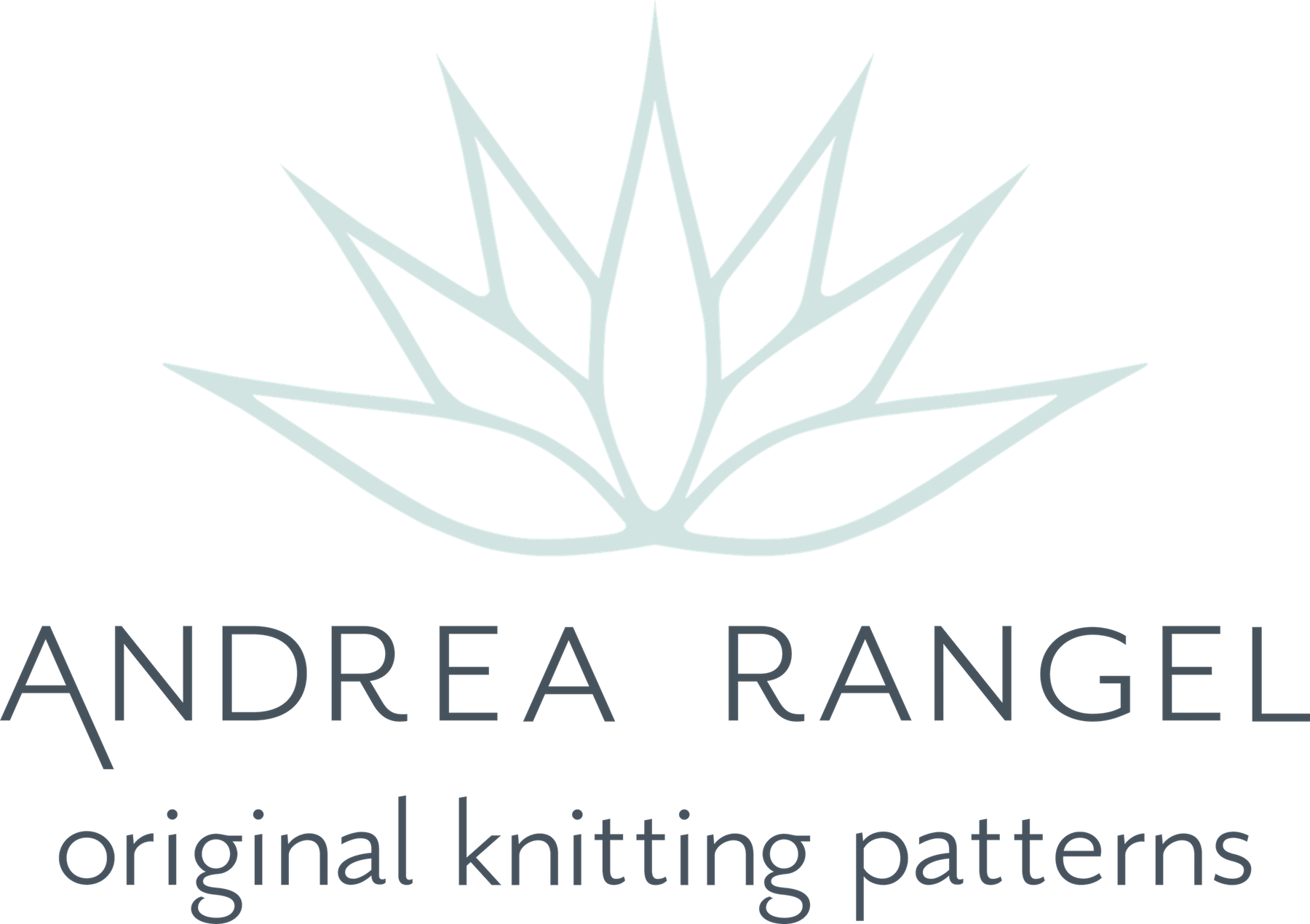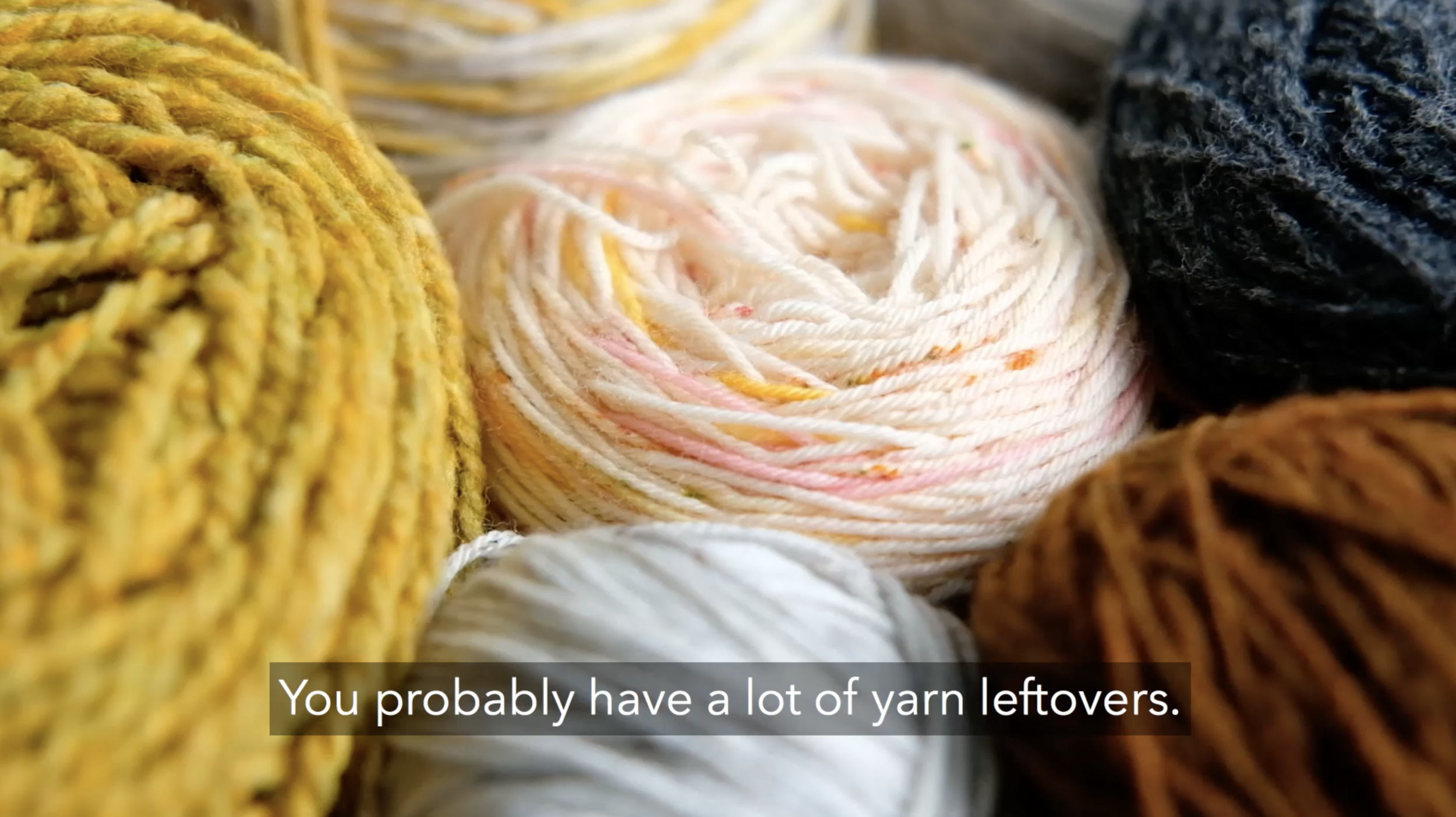5 Steps for Using a Hat as a Swatch
Using a hat as a swatch for a sweater project is a great strategy for knitters who just don’t feel like swatching but know they’ll have a hard time getting a sweater they like without it. I designed my Dissent Toque with this idea in mind. Because it’s written for both worsted and fingering weight yarns, it’s great to test out yarn ideas for both the Dissent Pullover (fingering weight) and my original Dissent Cardigan (worsted weight).
But this can work for other sweater patterns too. Just find a hat pattern that has the same gauge and stitch pattern as your sweater and you’ll be able to find out a lot about the yarn from your hat knitting.
On the left, Deanna reads a book on a sheepskin-covered piano bench. She’s wearing Dissent Pullover, a grey sweater with deep red patterning. On the right, Andrea is wearing Dissent Toque, a rich, earthy green hat with beige patterning.
Here are five steps to take if you want to be successful using a hat as a swatch for a sweater project.
Choose a yarn you think you’ll love for your sweater. Make sure the weight and gauge recommended by the manufacturer match what your pattern calls for, and keep in mind characteristics like fibre content, spinning style, plies, and twist to be help you pick one that will suit your desires.
Make an educated guess about needle size. Check out the gauge, the yarn weight, and the needle size called for in the pattern. Think about your previous knitting experience and consider whether you think you’re likely to get the gauge the pattern calls for with those needles. Pick a needle size based on your own experience. If you have no idea, just go with the needle size suggested in the pattern. If you start to keep track of whether you were able to use the pattern’s suggested size or you had to go up or down, you’ll start to have a better idea of your own knitting style so you’ll be able to make a better guess in the future. Be sure to write down your choice on a yarn label because otherwise you will forget and this will all be for naught!
Cast on for your hat! This is your swatch, so just knit the whole hat. As you work, you can periodically measure your gauge to see if you’re sort of on track, but don’t expect your unblocked work to be accurate since blocking can make a big difference.
Block your hat. Just give it a soak in some room temperature water and gentle soap. Empty the water and soak it once more in clean water, swishing it gently to get out any leftover dirt and soap residue. Squeeze extra water out and roll it in a towel. Leave it to dry on a head form or laying flat.
Evaluate it. Once it’s completely dry, get out your ruler and measure that gauge. If it’s spot on, yay! You should also really look at and feel the fabric to be sure it’s something that you’d want a whole sweater out of. Does the fabric look good at that gauge or is it too hole-y or too dense? Does your colour work pop as much as you’d like? Is it soft enough for you? Does it drape how you want? If the gauge doesn’t match the pattern, it’s time to try again. The hat is probably still great, so give it to someone who it will fit, or if you need the yarn, frog it, then wind it on a chair back or swift to get it back into skein form, and steam it to get the kinks out. Either way, cast on another hat (or a swatch if you’re more in the mood for that now) in a bigger or smaller needle, depending on the info your original hat gave you. If you actually hated the fabric or decided you don’t want a sweater in that yarn, this is the time to try another yarn out. Everyone needs a hat, so you can just keep making them!
Some Things to Keep in Mind
This works for sweater projects that will be worked in the round because hats are mostly knit in the round. If your project is knit flat, you’ll need a swatch that’s knit flat too or you won’t get accurate information.
Be open to the idea that your original idea won’t work. This is a swatch, so it’s totally possible you won’t get gauge on the first try. Even if you do, it’s also possible you won’t like the fabric enough to make a sweater out of it. But you will absolutely learn something about the yarn and about yourself as a knitter!
Keep notes. Write down needle size and material (please! You will not remember, I promise!) and any thoughts you have about working with the yarn, as well as how you feel about the finished fabric.
Remember that what matters in this situation is your preference and what you like. Even if the designer chose a yarn and you’re using that very same yarn, it may not be your cup of tea. Go with what YOU like! Developing our own tastes is a really rewarding part of craft and I think it’s a big part of self-care and self-love to make choices just based on our own whims. (Of course, be sure you’re also matching the pattern gauge while you go with those whims.)




